

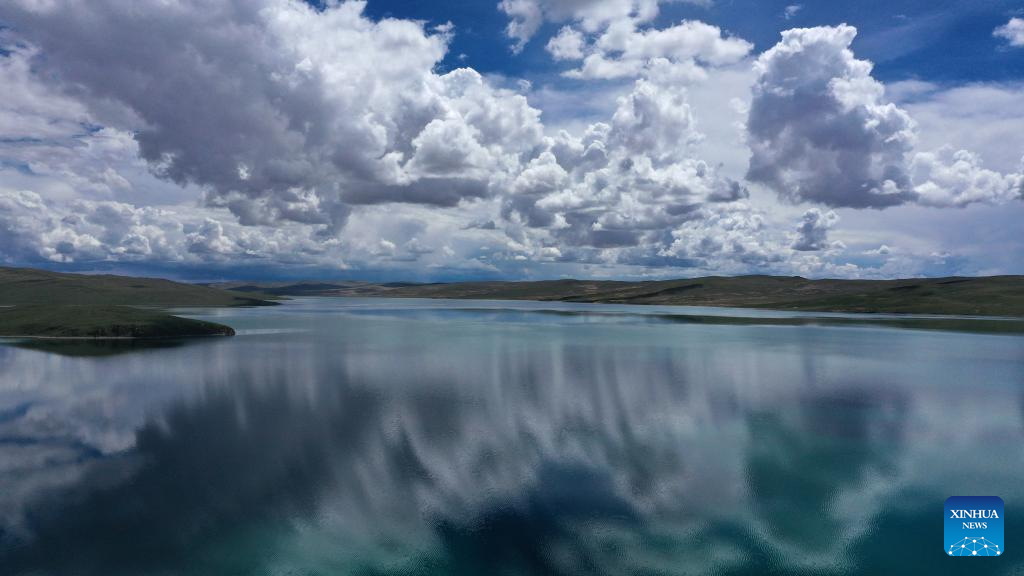
Aerial photo taken on June 23, 2022 shows the Xingxinghai Lake in Maduo County of Golog Tibetan Autonomous Prefecture, northwest China's Qinghai Province. Sanjiangyuan, which means the "source of three rivers," is home to the headwaters of the Yangtze, Yellow and Lancang rivers. The area provides the lower reaches of these major rivers with more than 60 billion cubic meters of water annually. Home to Sanjiangyuan, the province of Qinghai has been dubbed "the water tower of China." The Sanjiangyuan area once witnessed large-scale ecological degradation as a result of natural changes and human activities. The headwaters of the Yellow River was once cut off and many of the grasslands that herders relied on for their livelihood became barren. Beginning in 2005, China launched a major ecological project to protect and restore the environment in Sanjiangyuan. In 2016, China started piloting the Sanjiangyuan National Park. Thanks to the protective measures, the ecological environment in the area has steadily improved. (Xinhua/Han Fangfang)
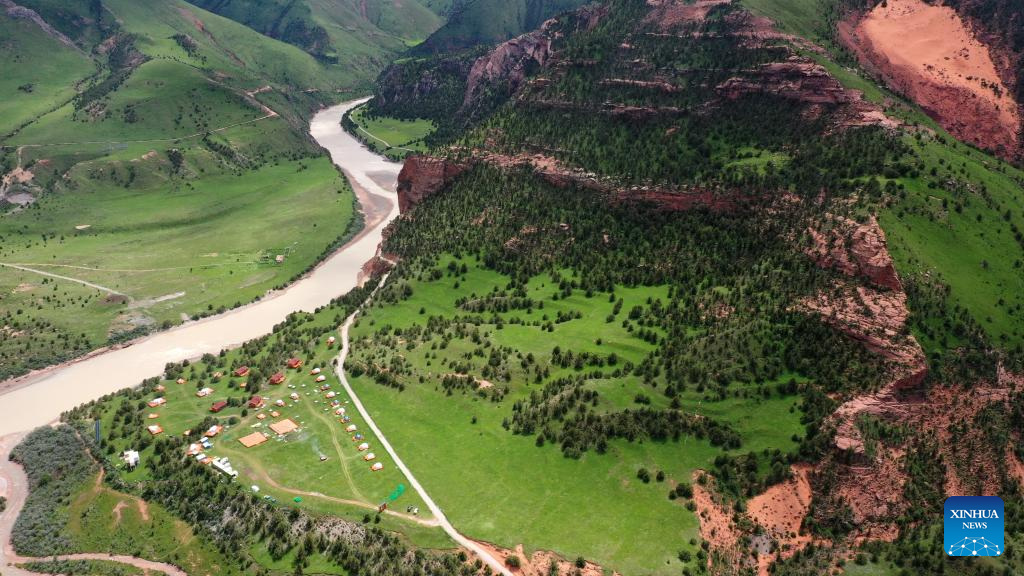
Aerial photo taken on June 29, 2022 shows the view of Angsai Canyon in Zaduo County, Yushu Tibetan Autonomous Prefecture, northwest China's Qinghai Province. Sanjiangyuan, which means the "source of three rivers," is home to the headwaters of the Yangtze, Yellow and Lancang rivers. The area provides the lower reaches of these major rivers with more than 60 billion cubic meters of water annually. Home to Sanjiangyuan, the province of Qinghai has been dubbed "the water tower of China." The Sanjiangyuan area once witnessed large-scale ecological degradation as a result of natural changes and human activities. The headwaters of the Yellow River was once cut off and many of the grasslands that herders relied on for their livelihood became barren. Beginning in 2005, China launched a major ecological project to protect and restore the environment in Sanjiangyuan. In 2016, China started piloting the Sanjiangyuan National Park. Thanks to the protective measures, the ecological environment in the area has steadily improved. (Xinhua/Luo Xiaofei)
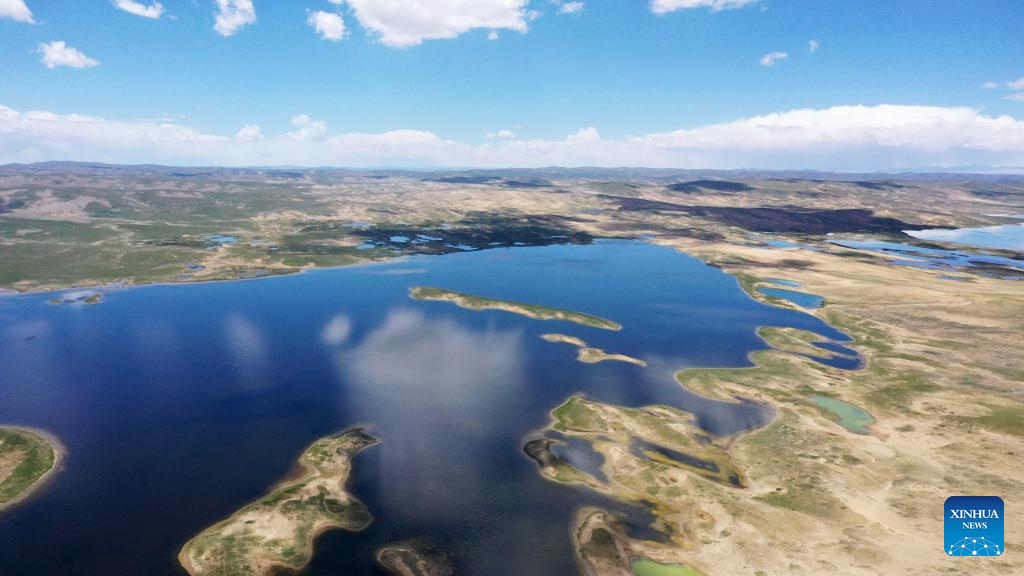
Aerial photo taken on July 3, 2022 shows the Xingxinghai Lake in Maduo County of Golog Tibetan Autonomous Prefecture, northwest China's Qinghai Province. Sanjiangyuan, which means the "source of three rivers," is home to the headwaters of the Yangtze, Yellow and Lancang rivers. The area provides the lower reaches of these major rivers with more than 60 billion cubic meters of water annually. Home to Sanjiangyuan, the province of Qinghai has been dubbed "the water tower of China." The Sanjiangyuan area once witnessed large-scale ecological degradation as a result of natural changes and human activities. The headwaters of the Yellow River was once cut off and many of the grasslands that herders relied on for their livelihood became barren. Beginning in 2005, China launched a major ecological project to protect and restore the environment in Sanjiangyuan. In 2016, China started piloting the Sanjiangyuan National Park. Thanks to the protective measures, the ecological environment in the area has steadily improved. (Xinhua/Luo Xiaofei)
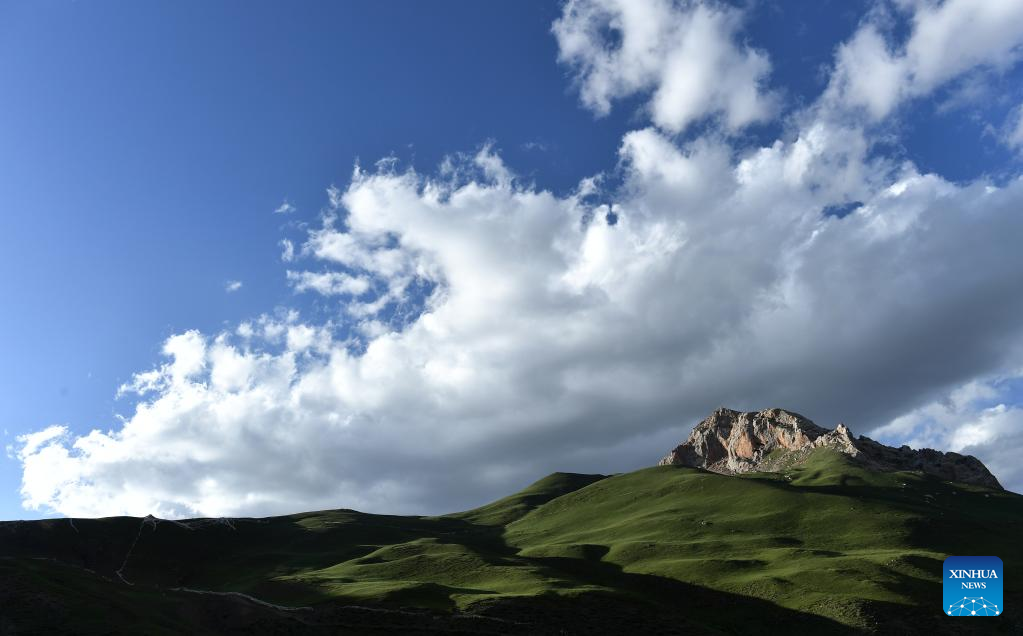
Aerial photo taken on June 27, 2022 shows the view of Zaduo County, Yushu Tibetan Autonomous Prefecture, northwest China's Qinghai Province. Sanjiangyuan, which means the "source of three rivers," is home to the headwaters of the Yangtze, Yellow and Lancang rivers. The area provides the lower reaches of these major rivers with more than 60 billion cubic meters of water annually. Home to Sanjiangyuan, the province of Qinghai has been dubbed "the water tower of China." The Sanjiangyuan area once witnessed large-scale ecological degradation as a result of natural changes and human activities. The headwaters of the Yellow River was once cut off and many of the grasslands that herders relied on for their livelihood became barren. Beginning in 2005, China launched a major ecological project to protect and restore the environment in Sanjiangyuan. In 2016, China started piloting the Sanjiangyuan National Park. Thanks to the protective measures, the ecological environment in the area has steadily improved. (Xinhua/Zhang Hongxiang)
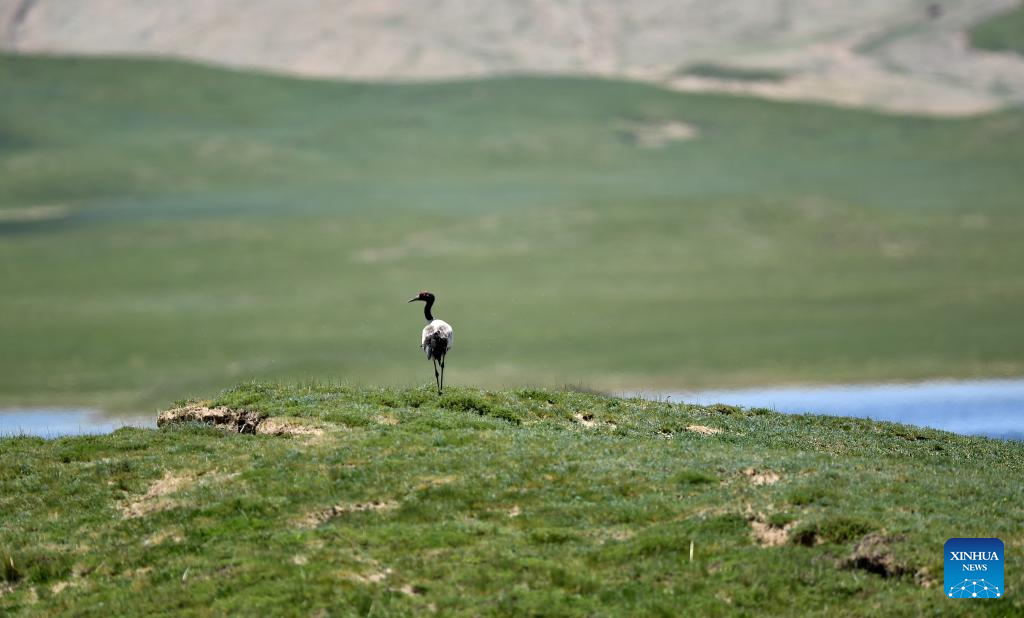
A black-necked crane is pictured by the Xingxinghai Lake in Maduo County of Golog Tibetan Autonomous Prefecture, northwest China's Qinghai Province, July 3, 2022. Sanjiangyuan, which means the "source of three rivers," is home to the headwaters of the Yangtze, Yellow and Lancang rivers. The area provides the lower reaches of these major rivers with more than 60 billion cubic meters of water annually. Home to Sanjiangyuan, the province of Qinghai has been dubbed "the water tower of China." The Sanjiangyuan area once witnessed large-scale ecological degradation as a result of natural changes and human activities. The headwaters of the Yellow River was once cut off and many of the grasslands that herders relied on for their livelihood became barren. Beginning in 2005, China launched a major ecological project to protect and restore the environment in Sanjiangyuan. In 2016, China started piloting the Sanjiangyuan National Park. Thanks to the protective measures, the ecological environment in the area has steadily improved. (Xinhua/Zhang Hongxiang)
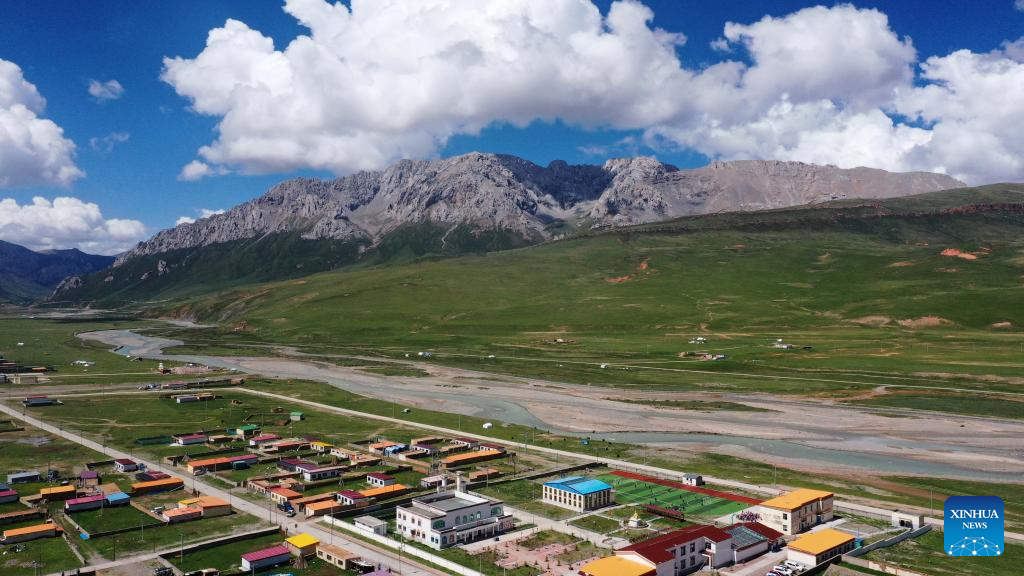
Aerial photo taken on June 30, 2022 shows the view of Zhaqing Town of Zaduo County, Yushu Tibetan Autonomous Prefecture, northwest China's Qinghai Province. Sanjiangyuan, which means the "source of three rivers," is home to the headwaters of the Yangtze, Yellow and Lancang rivers. The area provides the lower reaches of these major rivers with more than 60 billion cubic meters of water annually. Home to Sanjiangyuan, the province of Qinghai has been dubbed "the water tower of China." The Sanjiangyuan area once witnessed large-scale ecological degradation as a result of natural changes and human activities. The headwaters of the Yellow River was once cut off and many of the grasslands that herders relied on for their livelihood became barren. Beginning in 2005, China launched a major ecological project to protect and restore the environment in Sanjiangyuan. In 2016, China started piloting the Sanjiangyuan National Park. Thanks to the protective measures, the ecological environment in the area has steadily improved. (Xinhua/Zhang Hongxiang)
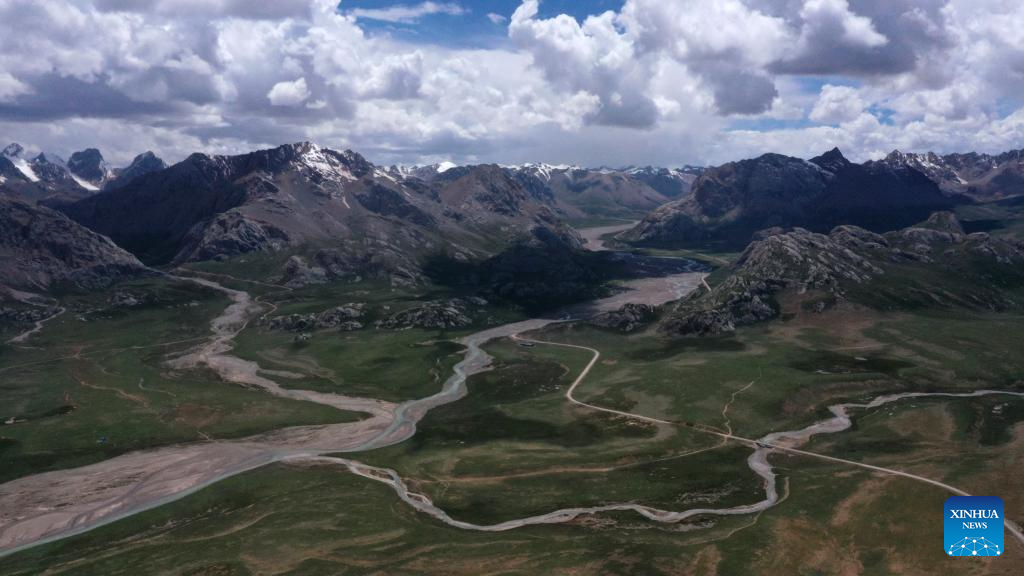
Aerial photo taken on June 30, 2022 shows the view of Zaduo County, Yushu Tibetan Autonomous Prefecture, northwest China's Qinghai Province. Sanjiangyuan, which means the "source of three rivers," is home to the headwaters of the Yangtze, Yellow and Lancang rivers. The area provides the lower reaches of these major rivers with more than 60 billion cubic meters of water annually. Home to Sanjiangyuan, the province of Qinghai has been dubbed "the water tower of China." The Sanjiangyuan area once witnessed large-scale ecological degradation as a result of natural changes and human activities. The headwaters of the Yellow River was once cut off and many of the grasslands that herders relied on for their livelihood became barren. Beginning in 2005, China launched a major ecological project to protect and restore the environment in Sanjiangyuan. In 2016, China started piloting the Sanjiangyuan National Park. Thanks to the protective measures, the ecological environment in the area has steadily improved. (Xinhua/Luo Xiaofei)
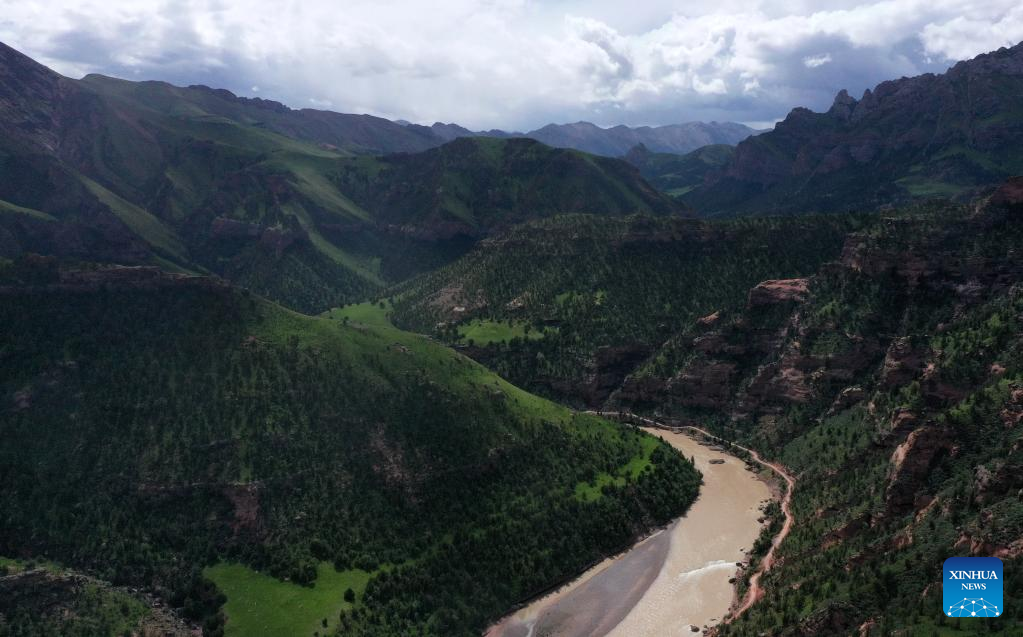
Aerial photo taken on June 29, 2022 shows the view of Angsai Canyon in Zaduo County, Yushu Tibetan Autonomous Prefecture, northwest China's Qinghai Province. Sanjiangyuan, which means the "source of three rivers," is home to the headwaters of the Yangtze, Yellow and Lancang rivers. The area provides the lower reaches of these major rivers with more than 60 billion cubic meters of water annually. Home to Sanjiangyuan, the province of Qinghai has been dubbed "the water tower of China." The Sanjiangyuan area once witnessed large-scale ecological degradation as a result of natural changes and human activities. The headwaters of the Yellow River was once cut off and many of the grasslands that herders relied on for their livelihood became barren. Beginning in 2005, China launched a major ecological project to protect and restore the environment in Sanjiangyuan. In 2016, China started piloting the Sanjiangyuan National Park. Thanks to the protective measures, the ecological environment in the area has steadily improved. (Xinhua/Luo Xiaofei)
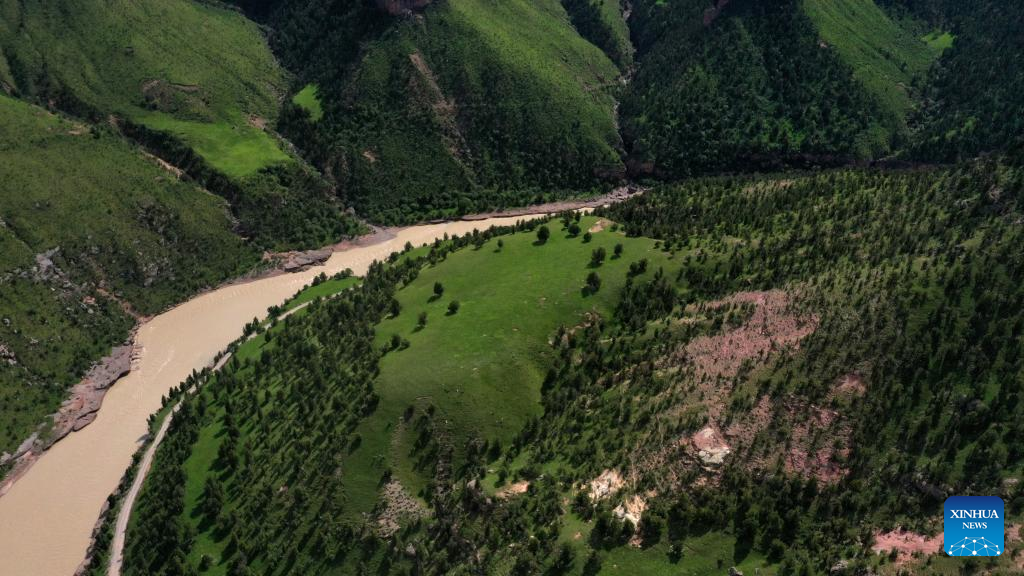
Aerial photo taken on June 29, 2022 shows the view of Angsai Canyon in Zaduo County, Yushu Tibetan Autonomous Prefecture, northwest China's Qinghai Province. Sanjiangyuan, which means the "source of three rivers," is home to the headwaters of the Yangtze, Yellow and Lancang rivers. The area provides the lower reaches of these major rivers with more than 60 billion cubic meters of water annually. Home to Sanjiangyuan, the province of Qinghai has been dubbed "the water tower of China." The Sanjiangyuan area once witnessed large-scale ecological degradation as a result of natural changes and human activities. The headwaters of the Yellow River was once cut off and many of the grasslands that herders relied on for their livelihood became barren. Beginning in 2005, China launched a major ecological project to protect and restore the environment in Sanjiangyuan. In 2016, China started piloting the Sanjiangyuan National Park. Thanks to the protective measures, the ecological environment in the area has steadily improved. (Xinhua/Han Fangfang)
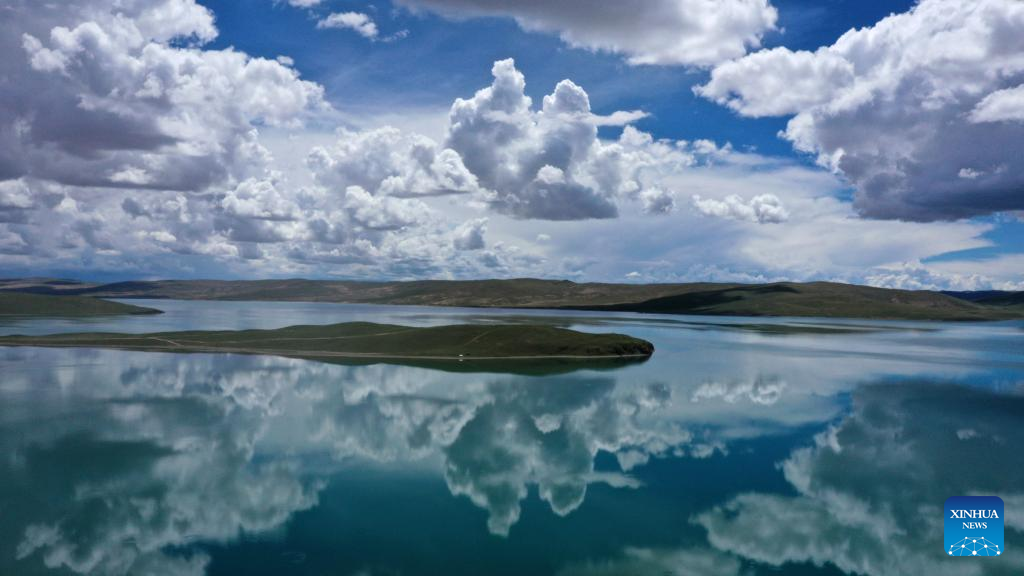
Aerial photo taken on June 23, 2022 shows the Xingxinghai Lake in Maduo County of Golog Tibetan Autonomous Prefecture, northwest China's Qinghai Province. Sanjiangyuan, which means the "source of three rivers," is home to the headwaters of the Yangtze, Yellow and Lancang rivers. The area provides the lower reaches of these major rivers with more than 60 billion cubic meters of water annually. Home to Sanjiangyuan, the province of Qinghai has been dubbed "the water tower of China." The Sanjiangyuan area once witnessed large-scale ecological degradation as a result of natural changes and human activities. The headwaters of the Yellow River was once cut off and many of the grasslands that herders relied on for their livelihood became barren. Beginning in 2005, China launched a major ecological project to protect and restore the environment in Sanjiangyuan. In 2016, China started piloting the Sanjiangyuan National Park. Thanks to the protective measures, the ecological environment in the area has steadily improved. (Xinhua/Zhang Hongxiang)
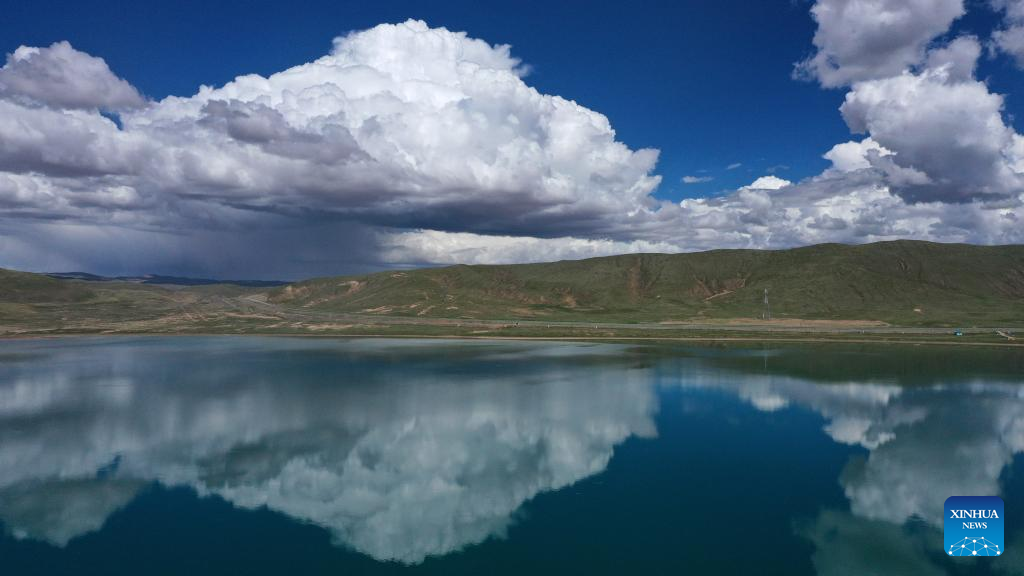
Aerial photo taken on June 23, 2022 shows the Xingxinghai Lake in Maduo County of Golog Tibetan Autonomous Prefecture, northwest China's Qinghai Province. Sanjiangyuan, which means the "source of three rivers," is home to the headwaters of the Yangtze, Yellow and Lancang rivers. The area provides the lower reaches of these major rivers with more than 60 billion cubic meters of water annually. Home to Sanjiangyuan, the province of Qinghai has been dubbed "the water tower of China." The Sanjiangyuan area once witnessed large-scale ecological degradation as a result of natural changes and human activities. The headwaters of the Yellow River was once cut off and many of the grasslands that herders relied on for their livelihood became barren. Beginning in 2005, China launched a major ecological project to protect and restore the environment in Sanjiangyuan. In 2016, China started piloting the Sanjiangyuan National Park. Thanks to the protective measures, the ecological environment in the area has steadily improved. (Xinhua/Zhang Hongxiang)
点击右上角![]() 微信好友
微信好友
 朋友圈
朋友圈

请使用浏览器分享功能进行分享
